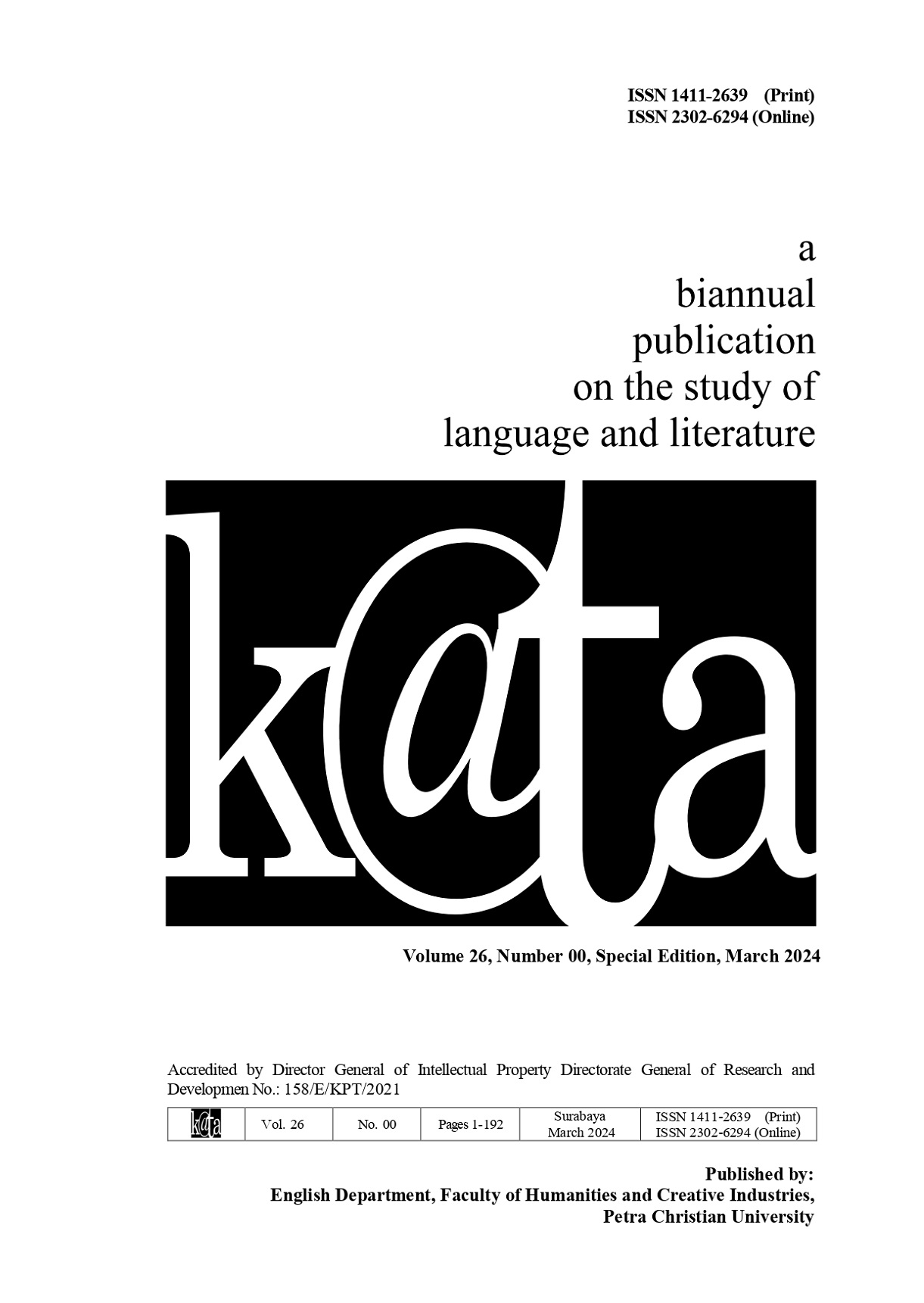Catcalling as Street Harassment: A Critical Discourse Analysis
Abstract
This study aims to explain the issue of catcalling as a form of harassment against women on the street. This research applies descriptive qualitative method which tries to identify, describe and explain phenomena through linguistic data along with the social and cultural context. The data were collected according to the research goal namely to explain the issue of catcalling depicted in the news text. The data were gathered by retrieving news text on catcalling issue from wollipop.detik.com and analyzed it using Fairclough's CDA framework. The results of the analysis show that in terms of text descriptions, the news writer used a variety of non-standard languages, informal word choices and the involvement of sources to support the issue. In terms of text interpretation, this media concentrates its news presentation on women-related issues by presenting its news which involves several sources to strengthen its reporting objectives. On the explanatory side of the text, the practice of discourse is associated with the socio-cultural context. Wollipop.detik.com alignment with the victim in this report confirms indirectly that the act of catcalling is a form of harassment against women. Readers are led to the understanding that as subtle as catcalling is, it is still a form of violence against women. Readers are also led to raising awareness of their impact. Readers' opinions are directed to provide a positive image as an active media in providing useful information to women as well as to play an active role in voicing injustice and inequality that occurs in society.
Downloads
References
Danoekoesomo, W. & Hage, S. (2016, April 28). The economic impact of sexual violence. Lentera Sintas Indonesia. Retrieved September 4, 2022, from http://www.sintas.org/
Darma, Y.A. (2014). Analisis wacana kritis dalam multiperspektif [Critical discourse analysis in multi-perspectives]. Refika Aditama.
Fairclough, N. (1989). Language and power. Long¬man
Fairclough, N. (1993). Critical discourse analysis and the marketization of public discourse: The universities. In Discourse and society. Sage.
Fairclough, N. (1995). Critical discourse analysis: The critical study of language. Longman Group Limited.
Guzman, C. de. (2022, April 14). Indonesia finally passes sexual violence bill. Time. Retrieved September 4, 2022, from https://time.com/6166853/indonesia-sexual-violence-law/.
Kartikawati, E. (2019, January 31). Mengenal catcall¬ing, pelecehan yang dialami miss international Kevin Lilliana [Understanding catcalling and assault experienced by Miss International Kevin Lilliana]. Wolipop. Retrieved from https://woli¬pop.detik.com/love/d-4408986/mengenal-catcal¬l¬ing-pelecehan-yang-dialami-miss-international-kevin-lilliana.
Santosa, R. (2003). Semiotika sosial pandangan terhadap bahasa [Social semiotics view of language]. Pustaka Eureka.
Stop street harassment. (2015, October 23). Retrieved September 4, 2022, from ¬¬http://www.stopstree¬tharassment.org/
Sumarlam. (2013). Teori dan praktik analisis wacana [Discourse analysis theory and practice]. Buku Katta.
Wodak, R., & Meyer, M. (Eds.). (2009). Methods of critical discourse analysis. (2nd ed.). Sage.

This work is licensed under a Creative Commons Attribution 4.0 International License.
![]() This work is licensed under a Creative Commons Attribution License
This work is licensed under a Creative Commons Attribution License




.png)
.png)

.png)












